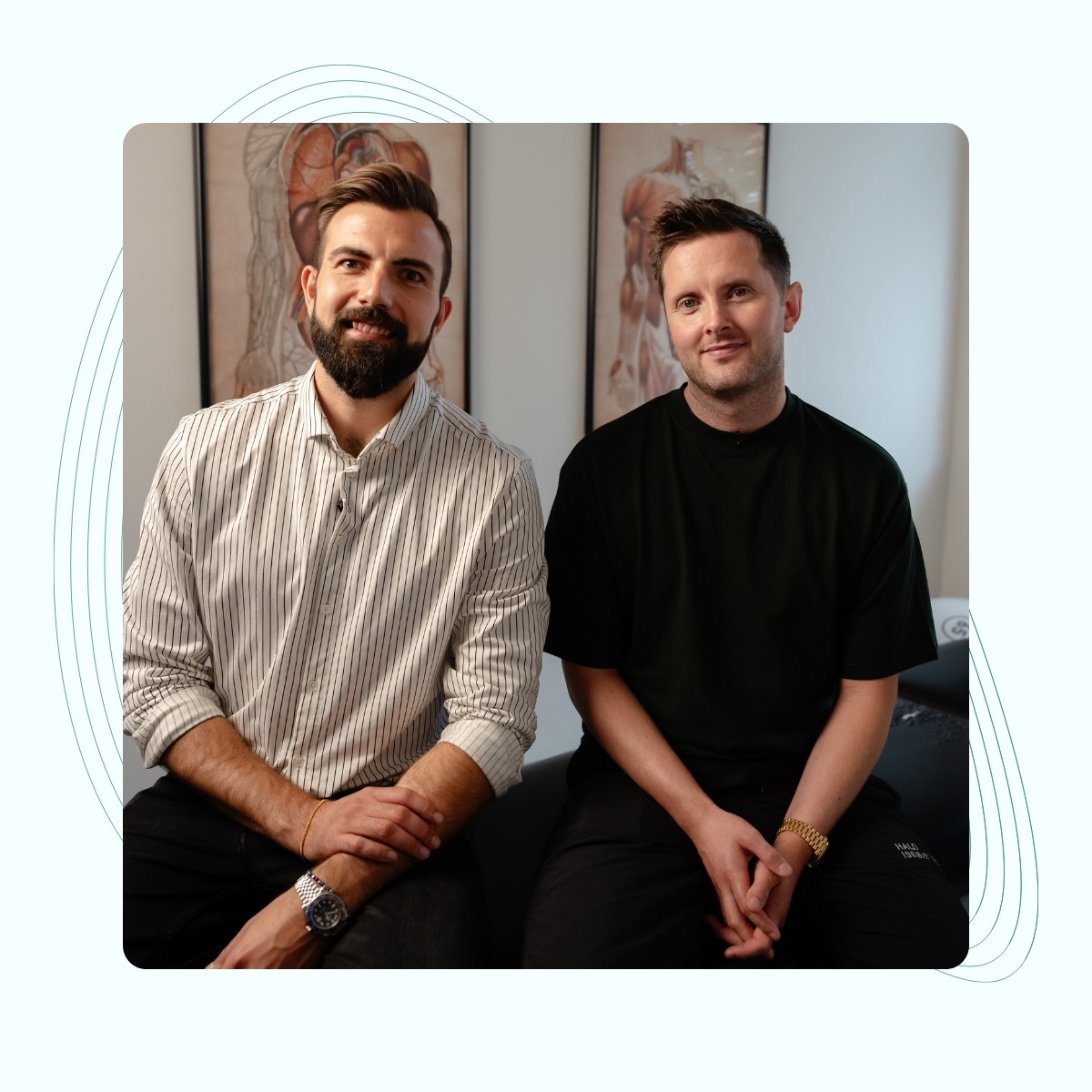We treat
Shoulder impingement & impingement syndrome
Learn more about impingement & impingement syndrome on this subpage
Shoulder Impingement
Many people suffer from shoulder pain when they raise their arm above their head. It is often diagnosed as subacromial impingement syndrome, or better known as shoulder impingement.
Jump to section [Vis]
What is shoulder impingement?
Also known as shoulder impingement syndrome
Shoulder impingement, also known as shoulder impingement or impingement syndrome, is a condition in which the tissue in the subacromial space, which consists of the bursa and rotator cuff muscles, becomes trapped between the bone on top of the shoulder (acromion) and the head of the upper arm bone (humerus).
When your rotator cuff (the muscles around your shoulder blade that stabilize your shoulder) becomes irritated (inflamed) or injured, it swells a little, much like your ankle swells after you twist. But because the rotator cuff is surrounded by bone, the swelling causes other things to happen.
The swelling reduces the amount of space in the subacromial space, which results in it rubbing against the acromion.
Like a vicious cycle, this results in swelling because the rotator cuff tendon rubs against the acromion, which further reduces the space between the humerus and the rotator cuff. In some cases, bone spurs (also called osteophytes) on the acromion bone can contribute to impingement by further reducing the space in the subacromial space.

What are symptoms of shoulder impingement?
Localized pain from the shoulder, shooting pain, pain that shoots down the arm, or tingling/stabbing irritation down the arm may be due to your rotator cuff. In addition, shoulder impingement can also be a cause of elbow and wrist pain.
The symptoms will often manifest themselves as:
- Pain when you raise your arms above your head
- Pain when you raise your arm, lower your arm from an elevated position, or reach for something
- Pain that moves from the front of your shoulder to the side of your arm
- Pain when lying on the painful arm
- Pain or tenderness at night that affects your sleep
- Pain when reaching behind you, such as to take something out of your back pocket or to zip up pants
- Shoulder and/or arm weakness and stiffness
How can the symptoms of shoulder impingement develop?
Symptoms develop gradually over weeks to months.
Shoulder impingement is closely related to other common causes of shoulder pain, such as bursitis or rotator cuff tendonitis. Both are inflammatory conditions of either the bursa or the tendon in the shoulder. These conditions can occur alone or in combination.
Shoulder pain can also be an indication of a more serious injury to your rotator cuff, either a partial rupture (tear) or a total rupture of the rotator cuff muscle from its attachment point on the bone.
If your rotator cuff is completely torn, you will likely have significant weakness and may not be able to lift your arm against gravity. In some cases, prolonged shoulder impingement can lead to frozen shoulder.
Causes of shoulder impingement
-
- The tendon is torn or swollen. This may be due to overuse from repetitive motion of your shoulder, injury, or age-related wear and tear.
-
- The bursa can be irritated and inflamed. Your bursa is a fluid-filled sac that lies between your tendon and acromion. Your bursa helps your muscles and tendons glide over your bones. Inflammation of the bursa can occur from overuse of the shoulder or injury (direct blow).
-
- The acromion is not flat (you may have been born that way), or you have developed bone spurs on your acromion.

Treatment of impingement syndrome
Adrenal corticosteroid
If treatment and exercises with your therapist are ineffective due to chronic inflammation in the shoulder, you and your doctor can agree to have a blockade placed. A blockade is an injection of adrenal corticosteroid hormone.
It is placed under the acromion in the bursa above the tendon with the aim of reducing the inflammation (irritation), and in some cases this means that the discomfort disappears completely and you can then achieve optimal rehabilitation without flare-ups of inflammation due to movement.
Physiotherapist – training
In addition, your therapist will also be able to design a training program that can help you understand why you need to train in different ways at different stages of your problem. The program will include both strength training, but also stability and endurance training, and it is important that you gain a good basic understanding of this so that you can work independently with your problem and achieve the best possible long-term effect.
Operation
In cases where the pain does not disappear with blockade, treatment and exercise, you may end up having to undergo shoulder surgery; an arthroscopy (binocular surgery), where the tendons are cleaned up and better space is created under the acromion.
What is the rotator cuff?
The rotator cuff is a group of four muscles that originate from your shoulder blade and attach like a “cuff” of the muscle tendon to your upper arm bone (humerus).
Your rotator cuff helps you raise your arm above your head and rotate your arm away from or towards your body. The rotator cuff has to fit into a small hole to attach to your upper arm, and this is where the muscles are susceptible to getting pinched or “impinged” between these bones, resulting in what we call “impingement syndrome.”
Shoulder impingement test
There are a few different tests that your doctor can perform to see if there is a pinched nerve in your shoulder. (North Jutland Region – Orthopaedic Surgery).
- One of them is Hawking’s test; where the arm is flexed to 90 degrees, then the upper arm is internally rotated, pain laterally (on the outside) over the deltoid (shoulder muscle) and possibly radiating is a positive finding for impingement.
- Another is Neer’s test; where the arm is held straight, maximally internally rotated, and then pressed up against the therapist’s resistance. Pain here is a positive finding for shoulder impingement.
It can be further diagnosed by ultrasound or MRI scan, and/or x-ray.
Good advice for shoulder impingement
- Take a break from the activities/stresses that cause pain (if possible).
- Since the pain is caused by irritation of the muscle tendon and/or bursa in the shoulder joint, it is important to take a break from the activities or movements that cause pain. Continuing to do the activities can worsen the pain, which can reduce your shoulder movement over time.
- Shoulder exercises. You probably can’t do without shoulder exercises (although they can be boring). Strengthening the muscles helps minimize your pain and increase your mobility.
Impingement shoulder surgery
If symptoms and pain continue without significant improvement with non-operative treatment, surgery may be considered. This is most commonly performed as a “keyhole” operation to create more space for the muscle tendon; also called arthroscopic subacromial decompression. In some cases, it may also be necessary to remove the bursa (bursectomy) and/or remove any osteophyte formations (bone spurs). This will depend on what minimizes the space in the subacromial space.

Osteopathic treatment of shoulder impingement
With osteopathic treatment it is possible to improve the space in the subacromial space in most cases. The treatment is based on the goal of the shoulder moving better as a whole, here we are not just thinking about the shoulder head, but the entire shoulder blade and the ribs that the shoulder blade moves over.
In addition, we also try to improve the nerve supply to the area via the neck and thoracic spine, improve blood flow to the area, improve mobility in the chest and organs in the chest, reduce the body’s sympathetic (stress) tone in the arm and relax the muscles in the shoulder.
Due to the reduced mobility in the shoulder joint, compensation is often seen elsewhere in the body, typically in the neck. It is important to keep this area mobile and relaxed so that additional tension does not arise elsewhere in the body, which can lead to a longer prognosis.
In addition, your therapist will also be able to design a training program that can help you understand why you need to train in different ways at different stages of your problem.
The program will include both strength training, but also stability and endurance training, and it is important that you gain a good basic understanding of this so that you can work independently with your problem and achieve the best possible long-term effect.

Often related problems
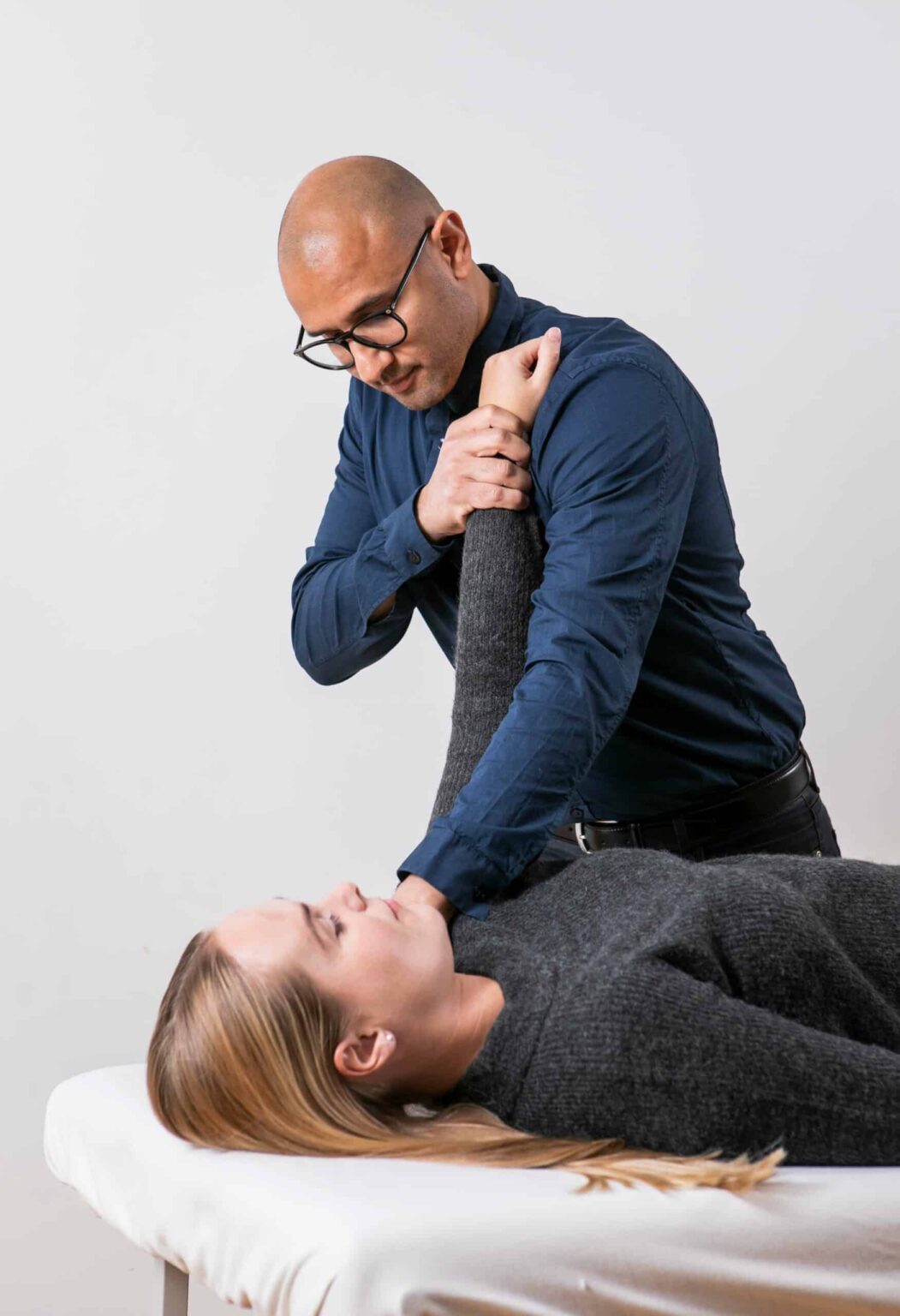
Shoulder dislocation
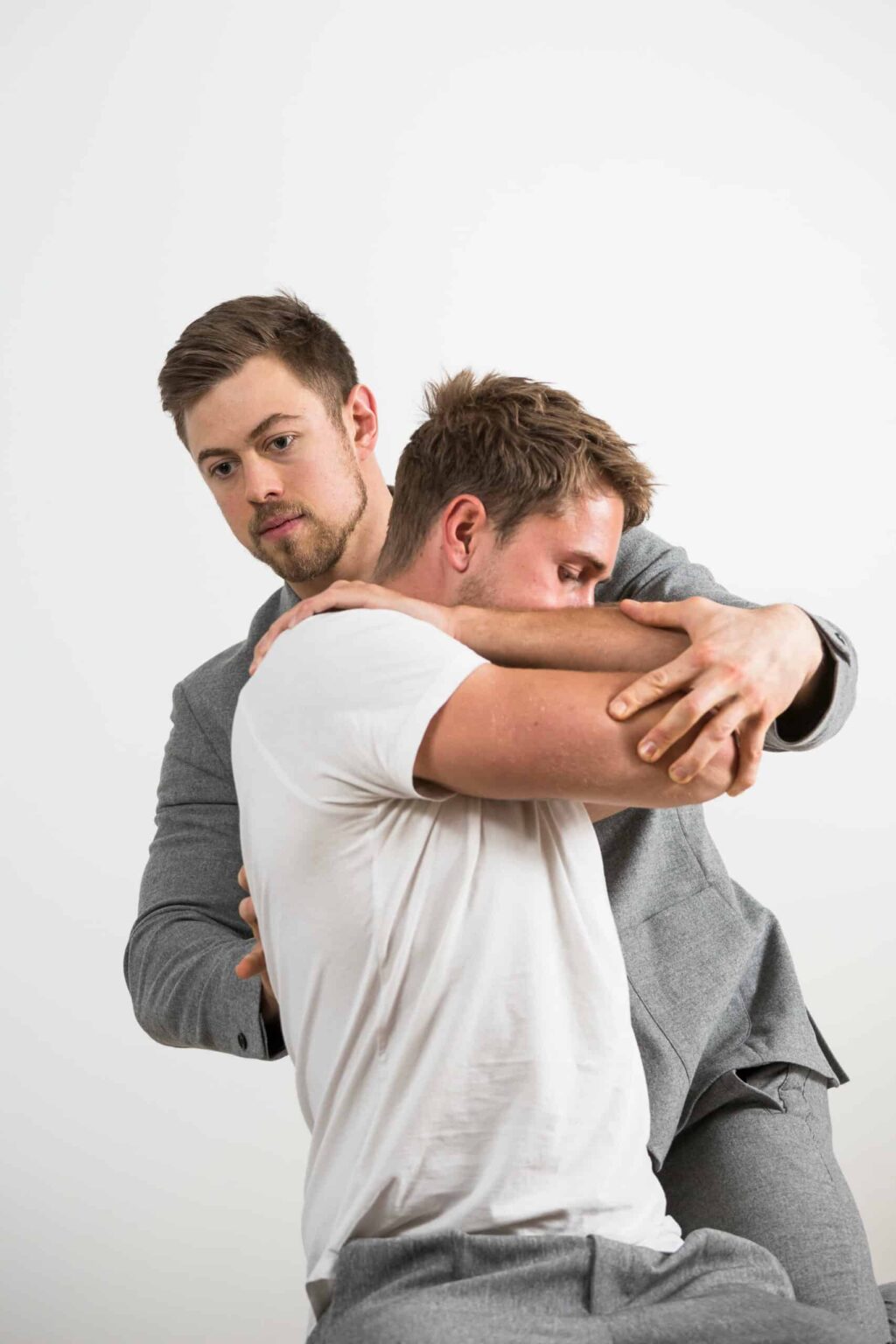
Winged scapula
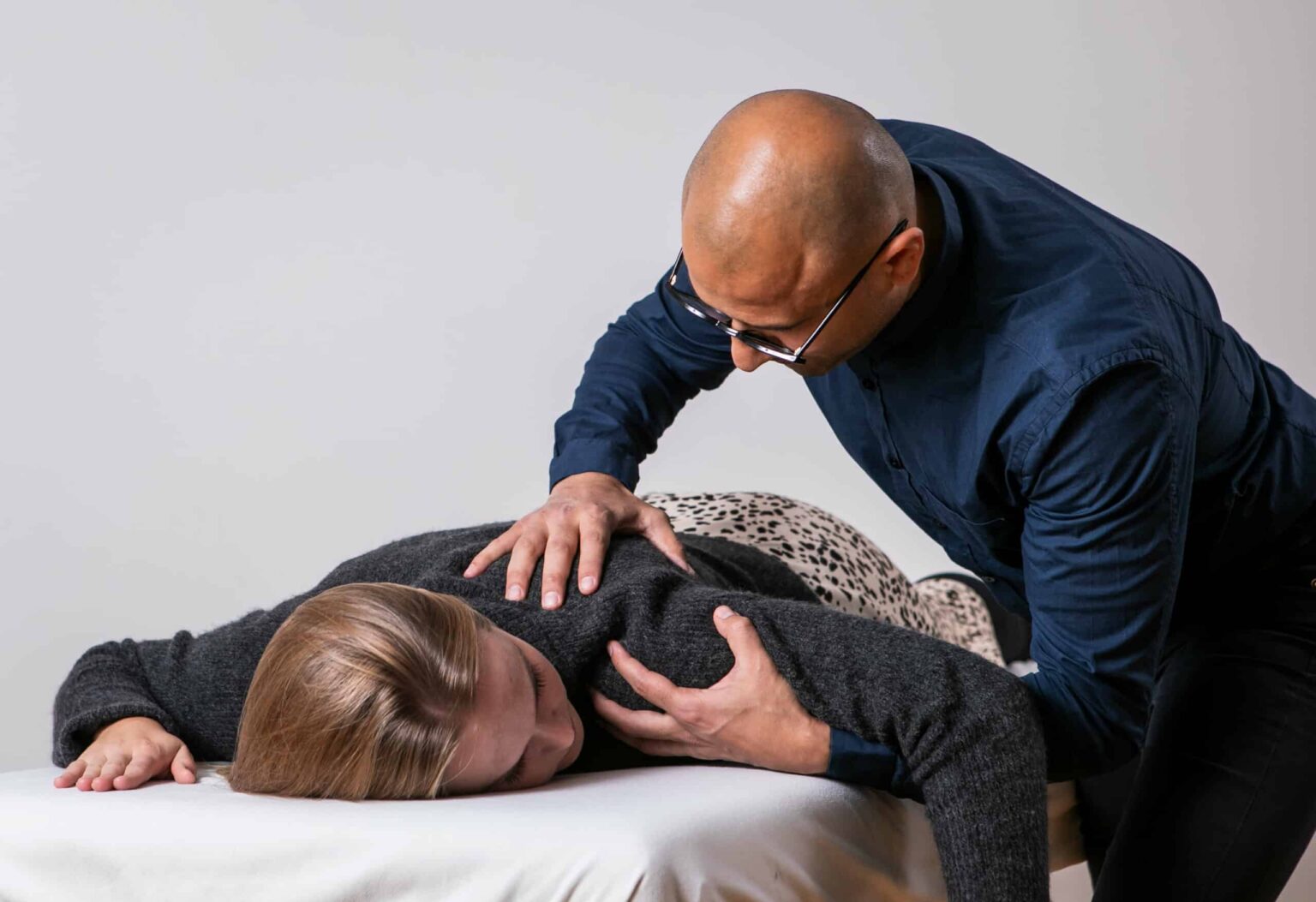
Rotator cuff injuries
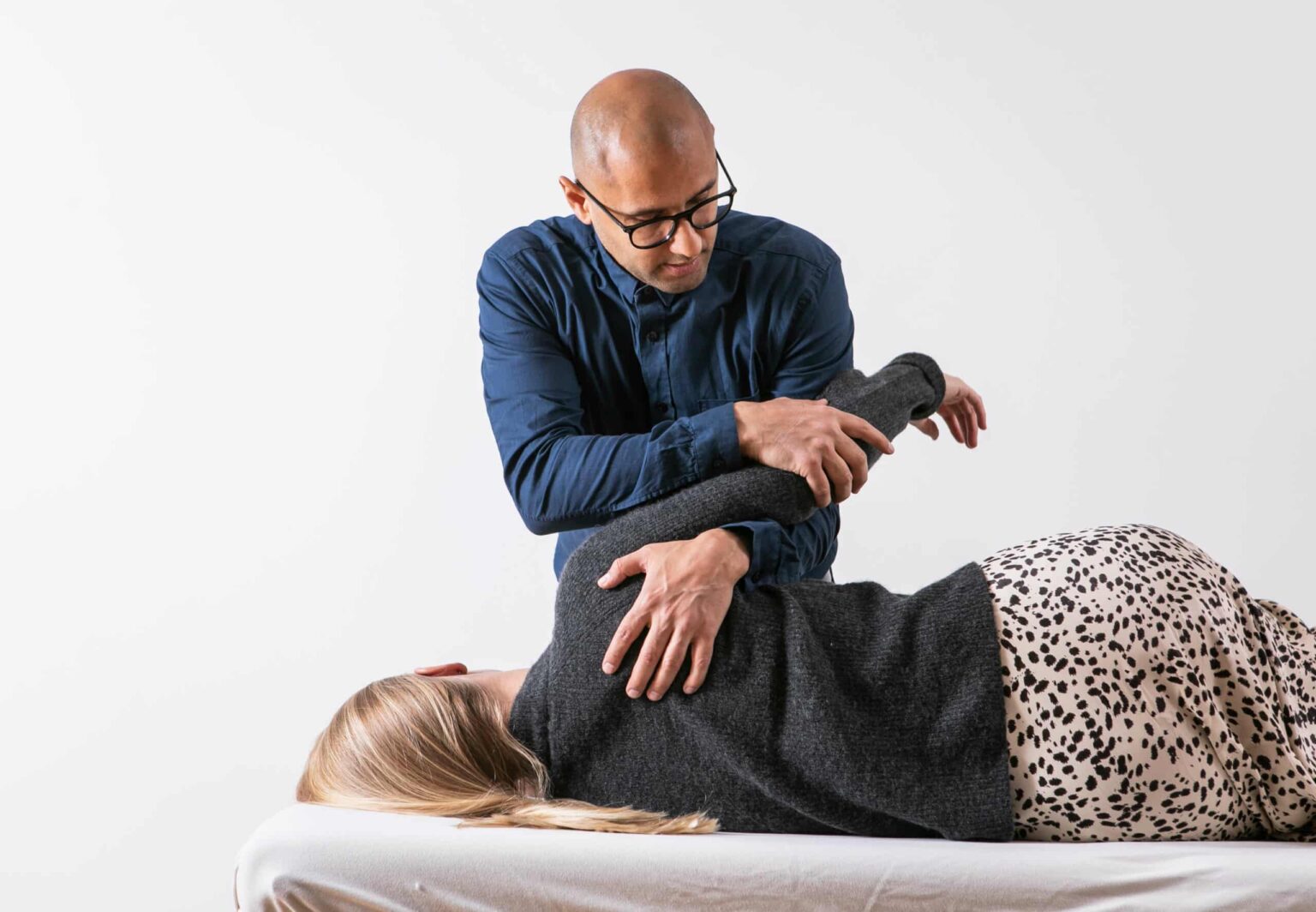
Shoulder pain

Frozen shoulder

